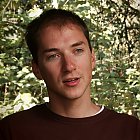The Science
Main column
How will crop yields respond to climate change?
By David Lobell, Department of Environmental Earth System Science and Center Fellow, Program on Food Security and the Environment, Stanford University
Much of my research focuses on understanding what climate change will mean for yields of major crops in key regions. For example, how will maize yields in Africa be affected by climate change if efforts to adapt the cropping systems are not successful (or nonexistent)? The main motivation for studying this is that, by knowing where the impacts will be greatest, we can prioritize resources for adaptation. Just as importantly, much of the knowledge we gain about why yields will be affected can help to design adaptation strategies. For example, will high temperatures directly damage maize pollen, or will the main problem be faster crop development or drying soils?
To many these would seem questions that we should already be able to answer. But the reality is that knowledge of several processes is still quite limited. One challenge is understanding exactly how climate will change in cropped areas. A second is understanding how crops and soils are affected by changes in weather. Third is understanding how farmers and markets respond to these changes in the absence of any interventions. As is common in many environmental problems, these questions span a range of traditional study areas – physics, biology, and economics to name a few.
How do we hope to make progress on these tough questions? Scientists have already made impressive strides in understanding the physics of the climate system, the biology of crops, and other relevant areas. That is the main reason we can confidently say that climate change poses a real threat to food security. My own research tries to improve our ability to predict outcomes by leveraging a few promising trends in science. One is the growing power of computers. Another is the widely growing body of data that can be used to test models. Perhaps most important will be careful monitoring of how crops, and the people who manage them, respond to the changes in climate already experienced. None of the answers will come easily or quickly, but there is cause to hope that 10 years from now we will have a much better idea of how to cope with climate change.
How the Svalbard Global Seed Vault works
by Ola Westengen, Coordinator of Operation and Management Svalbard Global Seed Vault
The Seed Vault is located on the Arctic Archipelago Svalbard at 78° North. The building and its location are spectacular, but the facility itself is based on appropriate and cost-effective architecture and technology. Three vault chambers sit at the end of a 125-metre tunnel carved out of a mountainside. The vaults are maintained at minus 18°C by means of a locally powered 10 kW compressor, while the permafrost ensures a back-up temperature at a maximum of no -4°C. The facility is kept under surveillance by means of motion-, gas- and temperature-detectors.
Shipment
Before shipment to Svalbard the depositors must submit a minimum of information (descriptors) about each seed sample in the box. This information is both enclosed in the boxes and made publicly available through the public interface of the database, the “Seed Portal” at www.nordgen.org/sgsv. Currently more than 430 000 seed samples are stored in the Seed Vault and the number is increasing with every seed deposit ‘opening’. Such “openings” are organized 4-6 times per year and we organize the logistics in close collaboration with our partner genebanks around the world. When a suitable number of genebanks have fresh seeds ready to be deposited we fix a date for seed shipments to arrive in Oslo, and the genebanks ship their seed boxes with professional couriers through the most direct route possible. From Oslo we handle the logistics together with our logistics partners, JetPak and Pole Position, who see to it that all shipments are brought to the cold environment at Svalbard as swiftly as possible.
Seed handling at Svalbard
The Seed Vault is located just 1,5 kilometers from the airport of the Norwegian settlement Longyearbyen and this is where the seed shipments arrive. The first thing we do is to scan the boxes with the x-ray scanner at the airport before transport to the vault. The scanning is a last control of the content of the boxes to make sure that no unwanted objects enter the vault. Remember that we are only keeping the boxes for the depositors and we are not supposed to open them. After transporting the boxes up the hill to the vault we carry all the boxes down to the hall in front of the vault chambers. By now we have received and registered the data about the content of all the boxes from the genebanks that sent us the seeds for deposit. And with access to the database through the computer in the office room we can print labels for each box, that has information about what deposit box this is, as well as what shelf place it shall have in the vault. This information is also bar-coded in order to allow for easy mechanical reading of the information once the boxes are included in the storage system. After labeling the boxes are brought through the last two doors into the chamber and placed on the shelves. That is when they are registered, and the information will soon after appear in the seed-portal.
Who can make use of the Seed vault?
All holders of PGRFA (Plant Genetic Resources for Food and Agriculture) are welcome to use the Seed Vault for backup of their collections. We liaise with potential depositors with respect to the material and schedule for deposition. A Standard Deposit Agreement that lays out the terms and conditions for depositing seed samples in the Seed Vault is concluded with all depositors. The act of depositing seed samples in the Seed Vault does not affect property rights to the material. Apart from the minimum set of information that must accompany the samples “black-box” conditions apply and only the depositor will be able to withdraw their own samples. On the other hand it is required that the depositors distribute samples of their own stocks samples of accessions in line with the principles in the International Treaty on Plant Genetic Resources for Food and Agriculture.
It’s a vault, not a bank
The Svalbard Global Seed Vault is not a genebank. Genebanks do more than just storing seeds; amongst other activities they viability test and regenerate their seed accessions when that is needed and of course distribute seed samples to researchers, breeders and other users. The Seed Vault does not carry out such banking functions, it merely offers a safe backup site for the unique and important crop diversity held in the world’s genebanks. According to FAO’s database on institutions holding plant genetic resources for food and agriculture there are about 1400 of them around the world. Many of them are located in geopolitically unsafe areas, others in areas prone to natural disasters and many struggle to secure funding and maintain good management. Those are some reasons why a backup site is needed. Besides, it is only common sense to store valuable resources at more than one site –it’s about avoiding keeping all eggs in one basket. However, all 1400 collections of plant genetic resources can not make use of the Seed Vault, simply for the reason that they hold crops that propagate by other means than seeds. Crops such as the banana, which do not produce seeds, or have vegetative propagation such as cassava, can be conserved as living plants in field-genebanks, or as plant tissues grown in test tubes (in vitro) kept under extremely cold conditions that minimize their growth rate (cryopreservation). Thus, the Seed Vault is only a backup alternative for collections of crops producing normal seeds, the so-called orthodox seed crops. This type of plants does, however, encompass most of our vegetables and grain and pulse crops such as maize, wheat, peas, beans and more than 3000 other species currently stored in the Seed Vault.
How long can the seeds be stored
Seed do not last forever. Some crops like sorghum have seeds that probably can last for thousands of years, while others, such as cabbage, have seeds that can probably only last for a few decades, even under optimal conditions. The “life expectancy” of seeds stored in optimal conditions such as those in Svalbard leads some to assume that once a seed sample reaches the end of its days, all will be lost. But the Seed Vault is not a time capsule where one places seeds, walks away, and forgets about it. It is a backup system for functioning genebanks. Genebanks will monitor the viability of their seed stocks. When seeds begin to lose viability, management protocols specify that some seeds from the sample should be taken out, planted, and new fresh seed harvested to replenish the genebank’s sample of that variety. When this process takes place, genebanks using the Seed Vault have agreed that they will send a fresh new sample to Svalbard. Because the Seed Vault will offer the best internationally agreed storage conditions we know that seed samples stored there will not lose viability faster there than in the best of the traditional genebanks elsewhere. Thus, seed will be renewed regularly, and the Seed Vault will always have a good, healthy sample ready just in case it is needed. This is why it is important to remember that Svalbard Global Seed Vault is not a stand-alone project. It is part of a global network of institutions and people who work hard to conserve and keep our seed heritage alive.
The project and its policy context
The Norwegian Government established the Seed Vault as a service to the world community. The management and operation of the Seed Vault is done according to a three-party agreement: It is owned and administered by the Norwegian Ministry of Agriculture and Food; The Global Crop Diversity Trust provides support for the ongoing operations as well as funding for preparation and shipment of seeds from developing countries and in-trust collections held by International Agricultural Research Centres; The Nordic Genetic Resource Centre (NordGen) manages the facility. An international advisory council (including representatives of the Governing body of the International Treaty, of FAO, CGIAR, the Trust, etc.) oversees the management and operation.
The initiative has got intergovernmental endorsement by the FAO Commission of Genetic Resources for Food and Agriculture. It is created in the context of the International Treaty, which provides for countries to cooperate to promote the development of an efficient and sustainable system for crop diversity conservation.



